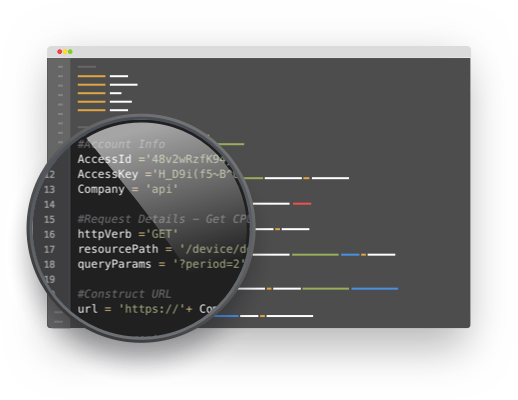With the v.111 release, which will be rolled out the second half of October, we’re unveiling v2 of the LogicMonitor REST API. Read on to learn more about this major new REST API version, as well as other improvements you will see in this release.
LogicMonitor REST API v2 Is Here!

The LogicMonitor REST API v2 offers many enhancements for programmatically querying and managing your LogicMonitor resources, including:
- Coverage of additional resources such as scripted service checks and NetScans.
- Support for additional HTTP methods, including PATCH, which allows you to make partial changes to an existing resource.
- Consistent HTTP and internal status codes.
- And many more! Check out the REST API v2 Developer’s Guide for more details.
Other Improvements
Alerts
- Alert expressions allow up to 512 characters. Previously, the maximum number of characters allowed in alert expressions was 255. To better accommodate complex time-based thresholds, alert expressions can now contain up to 512 characters.
Dashboards
- NOC widget improvement. Acknowledged alerts in the NOC widget will now appear prior to alerts in SDT. This updated priority order is intended to help you more quickly determine which alerts require more attention. The priority order, from highest to lowest, in which alerts now display in the NOC widget is as follows:
- Critical
- Error
- Warning
- ACK’d Critical
- ACK’d Error
- ACK’d Warning
- In SDT
- Cleared
- Text widget improvement. When switching back to the visual editor, the Text widget now retains HTML code such as <div> and <class> tags that were entered via the Source window. Previously, the editor replaced these tags without retaining their styles. Note: <script> tags are not allowed for the Text widget.
LM Cloud
- Five-hour polling interval for the AWS_EC2_Scheduled_Events DataSource. To prevent hitting AWS rate limits for environments with many EC2 instances, we’ve added a new polling interval option of five hours for EC2 scheduled events data collection.
- Discovery of Azure VM network properties located in other resource groups.
Network-related properties (e.g. private IP, public IP, virtual network) can now be populated for Azure VMs with networking resources located in different resource groups than the VM itself. - Improved Poll Now error messages. Previously, when a local Collector DataSource was applied to a cloud device, but the cloud device’s preferred Collector was a cloud Collector, a confusing error message would display indicating that Poll Now for that data collection method was not yet supported. To make the issue and its remedy clearer, the error message now states “The [collection method name] collection method is not supported by this device’s preferred Collector. Please assign a local Collector to this device to correct the issue.”
User Interface
- Collector size detail added to Collectors page. A new “Size” column has been added to the Collectors page. This column displays the Collector’s size, typically either “Nano,” “Small,” “Medium,” or “Large.” If the Collector is a very old version, “N/A” will display. If a user has customized the configurations in the “agent.conf” file, “Custom” will display.
- Consistent positioning of manage icon. Previously, the manage icon (
 ) was positioned inconsistently across the many areas of the platform where tables of like items are available for configuration (e.g. listings of devices, instances, alert rules, escalation chains, etc.). To provide better UI consistency and the improved user experience that comes with it, the manage icon is now always located in a far left column of any table in which it’s featured.
) was positioned inconsistently across the many areas of the platform where tables of like items are available for configuration (e.g. listings of devices, instances, alert rules, escalation chains, etc.). To provide better UI consistency and the improved user experience that comes with it, the manage icon is now always located in a far left column of any table in which it’s featured. - Pagination on Reports page. To improve user experience, the Report page now paginates if the following thresholds are met (for both the list view and tile view):
- The number of report groups exceeds 20.
- The number of reports within a report group exceeds 25.
- More detail in the enlarged graph view of resources. The enlarged graph view of resources within the Device tree has been enhanced to show both device and instance levels. This improvement is intended to add to the readability of these enlarged graphs as well as provide additional context when sharing graphs among team members.
LogicModule Releases
Next we’ve listed new and improved LogicModules that were implemented since our last release.
New Monitoring Coverage
- Viptela SD-WAN – 10 DataSources, 1 PropertySource, 4 SysOID Maps
- Oracle Database – 16 DataSources, 2 PropertySources
Monitoring Improvements
- EMC DiskPerformance (NaviSecCli) – 1 DataSource
- More robustly handles different NaviSecCli versions
- Windows WMI Access Denied – 1 DataSource
- Various improvements to identifying access denied issues



